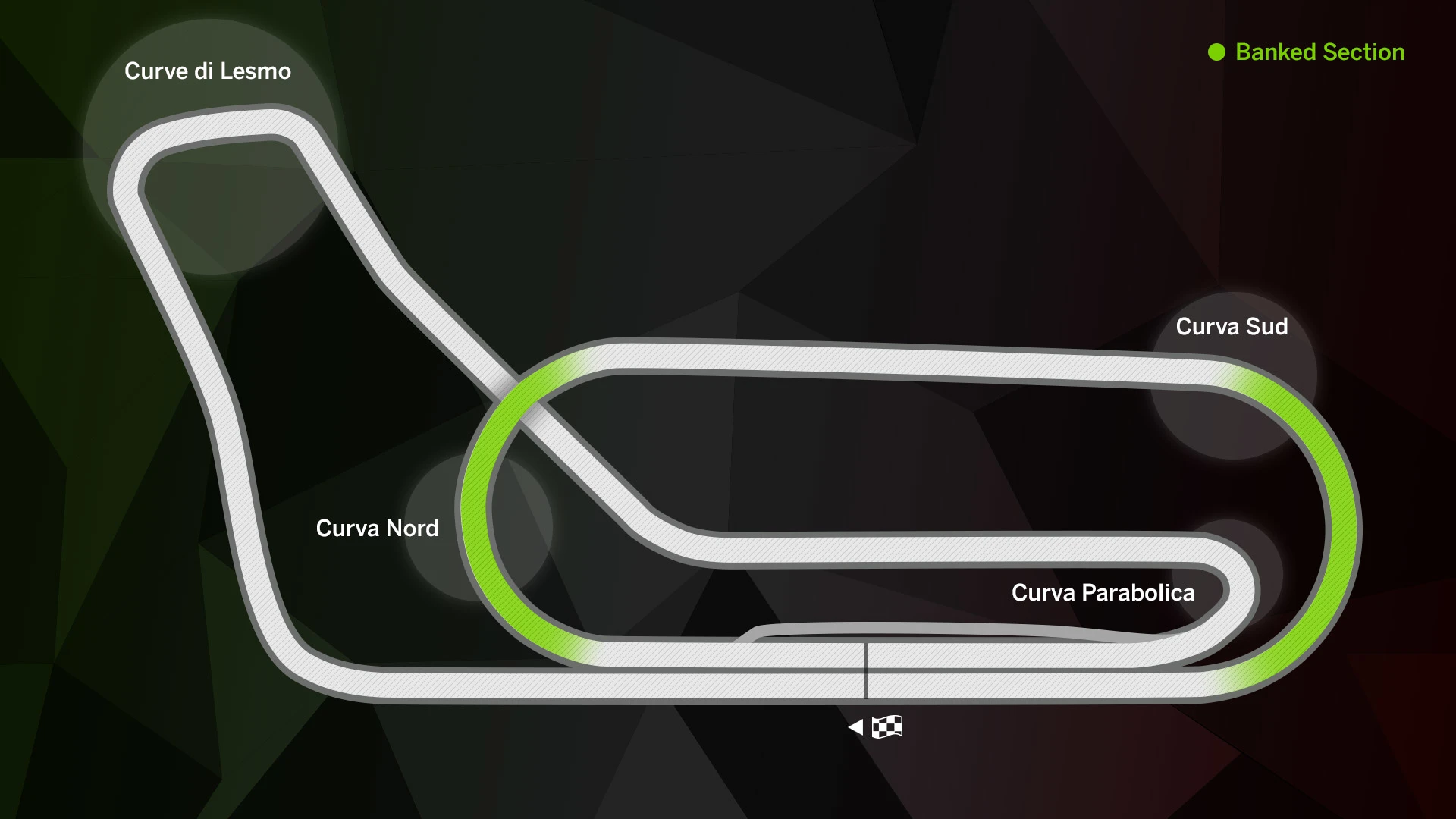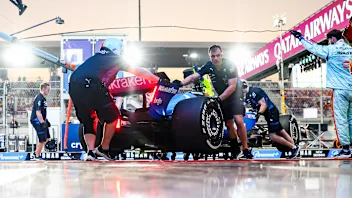We’ve all seen the pictures. Lurking in the background of today’s Monza circuit, sections of insanely steep, banked track, which Formula One cars supposedly used to compete on. Urban myth, or racing reality? We have the answers…
When was the banking built?
The famous banked section of circuit was constructed in 1954 as part of Monza’s extensive redevelopment and was used in four F1 world championship rounds, in 1955, 1956, 1960 and 1961.
How did the banking fit into the circuit layout?
The banked section was found on the Pista di Alta Velocita, a 4.25-kilometre high-speed oval that looped in and around much of the existing 5.75-kilometre road circuit. For the four Grands Prix mentioned above, the two individual circuits were combined to create one mighty 10-kilometre track. As both courses utilised the same main straight, rubber pylons were used to divide it in two. When in the inside lane, drivers would peel off to the right near to the site of today’s first chicane in order to tackle the daunting Curva Nord. Those in the outside lane, meanwhile, would continue onwards towards Curva Grande (today’s Turn 3).

How steep was the banking?
Very steep - up to 80 percent gradient at its steepest point. The curves, which were built on reinforced concrete structures and were lined with only a small armco barrier, had a radius of 320 metres and were designed to cope with theoretical top speeds of around 285 km/h (177 mph).
Wow, that’s extremely fast. Wasn’t it dangerous?
Yes, very, mainly because the centrifugal forces generated when negotiating the banking at speed placed enormous stresses on suspension components and, in particular, on tyres. The tyre situation was further complicated by the banking’s abrasive concrete surface and by the fact that the teams had to choose tread and pressures that would also cope with the altogether different challenges (not to mention surface) of the road track. In the 1956 race several drivers experienced terrifying moments on the banking when their tyres threw their treads and for the following three years the Grand Prix reverted exclusively to the road track.
But if it was so dangerous, why did F1 racing return to the banked layout in 1960?
That's a controversial issue, but many believe it was largely to appease Ferrari. The 1960 season had not been kind to the Scuderia, with their front-engined 246s proving no match for the new generation of rear-engined machinery from Great Britain. One area where they did still enjoy an advantage, however, was straight-line speed… The decision to revert to the 10-kilometre layout prompted universal condemnation from the British teams (including Cooper, Lotus and BRM) who, believing the banked section to be too fast and far too bumpy for modern Grand Prix machinery, opted to boycott the race in protest (leaving Ferrari to sweep the podium places). The 10-kilometre track remained in place for the 1961 race, but with speeds down slightly on the year before because of the change in engine regulations, the British teams agreed to take part, despite maintaining their displeasure at the use of the banked section. In the end the race would prove to be one of the most tragic in F1 history, with Ferrari star Wolfgang von Trips perishing along with 15 spectators in a horrific crash on lap 2. Although the accident took place approaching the Parabolica and not on the banking, the Formula One paddock opted never to race on the high-speed section again.
Who won Monza’s banked races?
The great Juan Manuel Fangio triumphed for Mercedes in the first race in 1955, with his friend and rival Stirling Moss claiming victory for Maserati the following year. The 1960 and 1961 races were both won by Ferrari’s Phil Hill. Oh, and Pete Aron won in 1966.
What? Pete Aron? 1966? Didn’t you say the 1961 race was the last to feature the banking?
It was, but the banking made a cameo appearance in John Frankenheimer’s famous 1966 film Grand Prix, starring the late James Garner as Pete Aron.
I see. Was the banking used for any other ‘real’ races?
Yes, most notably in the ‘Race of Two Worlds’, which pitted American-spec IndyCars against European machinery. The event, which was nicknamed Monzanapolis because of its similarity to the Indianapolis 500, was won on both occasions by American Indy racers - Jimmy Bryan in 1957 and Jim Rathmann in 1958. The banking was also used in the Monza 1,000km sportscar race between 1965 and 1969, but was abandoned for good shortly afterwards and left to decay.
But the banking still exists today?
It does. In fact, having narrowly escaped planned demolition in the late 1990s, some sections have even been repaved in recent years. Earlier this year Lewis Hamilton and 1956 Monza winner Stirling Moss demonstrated a pair of Mercedes W196s on one such section, the reigning world champion saying: “It was amazing, incredible. We don't have any banking in F1 [anymore]. It's very, very cool - I think we should have a banked corner [again].” Hamilton’s not alone in admiring Monza’s banking, with many of his fellow drivers making regular pilgrimages to the evocative old circuit on a Grand Prix weekend to breathe in the past.
Watch: Jean Alesi on Italy's 'Temple of Speed'
Next Up
Related Articles
 Grosjean reunited with helmet from 2020 Bahrain GP crash
Grosjean reunited with helmet from 2020 Bahrain GP crash F1 drivers who bounced back after dropping off the grid
F1 drivers who bounced back after dropping off the grid Williams become latest team to announce 2026 livery reveal date
Williams become latest team to announce 2026 livery reveal date How Lewis Hamilton became F1’s most influential fashion icon
How Lewis Hamilton became F1’s most influential fashion icon.webp) ExclusiveLowdon on why Zhou ‘ticked all the boxes’ for Cadillac
ExclusiveLowdon on why Zhou ‘ticked all the boxes’ for Cadillac.webp) How F1 drivers recharge during the winter break
How F1 drivers recharge during the winter break